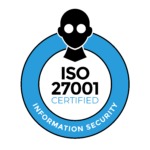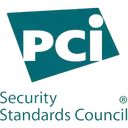HITRUST audit compliance is a comprehensive security and privacy framework that helps organizations manage information risk and meet regulatory requirements across highly regulated industries, particularly healthcare. Unlike traditional compliance approaches that require you to juggle multiple standards, HITRUST creates a unified framework that harmonizes over 50 authoritative sources—including HIPAA, NIST, ISO 27001, PCI DSS, and COBIT—into a single, manageable structure.
For organizations handling sensitive data like protected health information (PHI), payment card information, or other confidential data, HITRUST provides a risk-based approach to cybersecurity that adapts to evolving threats while maintaining regulatory alignment.
What HITRUST is
HITRUST was founded in 2007 by the Health Information Trust Alliance as a response to the fragmented compliance landscape in healthcare. The organization developed the Common Security Framework (CSF) as a certifiable framework that could address multiple regulatory requirements simultaneously while providing measurable assurance of your organization’s security posture.
The framework’s primary goal is to create a standardized, prescriptive approach to information security that can scale across organizations of different sizes and risk profiles. Rather than requiring you to separately address dozens of different standards and regulations, HITRUST provides a single assessment process that demonstrates compliance across multiple requirements.
Core requirements and principles
HITRUST compliance centers around 19 control categories covering the full spectrum of information security:
Information Security Management Program establishes governance and accountability structures. Access Control ensures appropriate user permissions and authentication mechanisms. Human Resources Security addresses personnel screening and training requirements. Physical and Environmental Security protects facilities and equipment. Communications and Operations Management covers day-to-day operational security procedures.
Information Systems Acquisition, Development and Maintenance governs secure system lifecycle processes. Information Asset Management ensures proper handling of sensitive data. Incident Management establishes response procedures for security events. Business Continuity Management addresses disaster recovery and operational resilience.
Additional categories cover Compliance Measurement and Reporting, Risk Management, Regulatory and Industry Requirements, Information Security Policy, Organization of Information Security, Mobile Device Management, Vulnerability Management, Network Protection, Transmission Security, and Password Management.
Each category contains specific control objectives with detailed implementation specifications that your organization must meet to achieve certification.
Assessment types and categories
HITRUST offers three distinct assessment levels designed for different organizational sizes and complexity:
e1 (Essentials) represents the entry-level assessment with 44 controls, ideal for smaller organizations or those new to formal security frameworks. This assessment typically takes 5-6 months to complete and provides foundational security assurance.
i1 (Intermediate) includes 182 controls using a streamlined, non-risk-based approach. This level suits mid-sized organizations with more complex IT environments and takes 6-9 months to complete. The i1 certification is valid for one year.
r2 (Risk-based) represents the most comprehensive assessment, with 250-1,800 controls depending on your organization’s risk profile and scoping decisions. This assessment requires detailed risk analysis and scoping exercises, typically taking 12-15 months to complete. The r2 certification remains valid for two years.
Each level builds upon the previous one, allowing your organization to progress incrementally without losing prior work investment.
Compliance process
The HITRUST compliance process follows a structured approach beginning with preparation and scoping. You must define your assessment scope, identifying which systems, processes, and data will be included in the certification boundary. This scoping exercise is particularly important for r2 assessments, as it directly impacts the number of applicable controls.
Gap analysis and readiness assessment comes next, where you evaluate your current security posture against HITRUST requirements. This phase typically involves either self-assessment or working with external consultants to identify control gaps and develop remediation plans.
Control implementation represents the most resource-intensive phase, where you must implement missing controls and gather evidence of their effectiveness. This includes developing policies and procedures, implementing technical controls, and training personnel.
Validated assessment involves working with a HITRUST Authorized External Assessor who reviews evidence and validates control implementation. The assessor conducts interviews, reviews documentation, and may perform technical testing to verify control effectiveness.
Quality assurance review by HITRUST ensures assessment consistency and quality before issuing the final certification letter. This independent review helps maintain the credibility and reliability of HITRUST certifications across the industry.
Key roles include the Internal Assessment Sponsor who provides organizational leadership and resources, Control Owners responsible for implementing specific controls, Evidence Collectors who gather and organize supporting documentation, and External Assessors who provide independent validation of control implementation.
Common challenges
Organizations frequently underestimate the resource intensity required for HITRUST compliance. The framework demands significant time investment from internal teams, often requiring dedicated project management and cross-functional coordination across IT, security, legal, and operations teams.
Evidence collection and documentation poses another significant challenge. HITRUST requires extensive documentation to demonstrate control implementation and effectiveness. Organizations often struggle with organizing evidence in formats acceptable to assessors and maintaining documentation currency.
Control implementation complexity can overwhelm organizations lacking mature security programs. Some HITRUST controls require sophisticated technical implementations or process changes that may exceed internal capabilities, necessitating external expertise or tool acquisitions.
Scope creep frequently occurs during the assessment process as organizations discover additional systems or processes that should be included in the certification boundary. This can extend timelines and increase costs significantly.
Change management throughout the lengthy certification process can disrupt progress. You must maintain control effectiveness while simultaneously implementing new controls and gathering evidence.
These challenges often stem from insufficient initial planning, unrealistic timeline expectations, or inadequate allocation of internal resources to support the certification effort.
Benefits of compliance
HITRUST certification delivers substantial business development advantages. Many healthcare organizations and their business associates now require HITRUST certification as a prerequisite for contract awards. The certification serves as a competitive differentiator that can accelerate your sales cycles and reduce the need for extensive security questionnaires.
Operational efficiency improves through the framework’s unified approach to compliance. Rather than managing separate compliance efforts for HIPAA, SOC 2, PCI DSS, and other requirements, you can address multiple regulatory obligations through a single HITRUST assessment.
Risk management benefits include the framework’s adaptive threat intelligence, which helps your organization stay current with evolving cybersecurity threats. HITRUST’s risk-based approach ensures that your security investments align with actual risk exposure.
Customer trust and transparency increase significantly with HITRUST certification. The rigorous third-party validation process provides your customers and partners with measurable assurance of your organization’s security posture, often eliminating the need for separate security assessments.
Insurance benefits may include reduced premiums or better coverage terms from cyber insurance providers who recognize HITRUST as a strong indicator of effective risk management.
Who needs it and when
Healthcare organizations including hospitals, health systems, medical practices, and healthcare technology companies represent the primary HITRUST audience. However, the framework increasingly applies to any organization handling sensitive data in regulated industries.
Business associates under HIPAA face growing pressure from covered entities to obtain HITRUST certification as proof of adequate safeguards for protected health information.
Financial services organizations may pursue HITRUST to demonstrate compliance with multiple regulatory requirements while benefiting from the framework’s comprehensive approach to information security.

Related Posts
Stay connected
Subscribe to receive new blog articles and updates from Thoropass in your inbox.
Want to join our team?
Help Thoropass ensure that compliance never gets in the way of innovation.













.png)